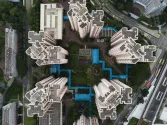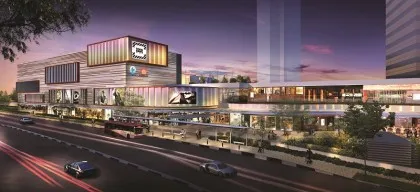
Expect the unexpected
NEW MALL CONCEPTS
How will malls evolve over the years as digitalisation increases and shopper expectations intensify? In anticipation of retail trends and changes in consumer behaviour, Muneerah Bee seeks the views of three forward-looking mall professionals.
Consumers are no longer visiting malls for the sole purpose of shopping. Instead, they are looking for an all-encompassing experience of retail, leisure and entertainment. The success of retail malls often lies in making sure consumers’ needs and wants are met at all times.
For malls to provide a seamless shopping journey for today’s consumers, they will need to anticipate shoppers’ concerns and provide solutions before they arise. Understanding the needs of shoppers and their pain points will allow malls to develop the infrastructure that streamlines the shopping journey in an exciting yet conducive environment.
Shifting expectations
As technology is becoming integrated into consumers’ lifestyle, there are many benefits in leveraging digital technology to provide a more seamless shopping experience in-store and beyond because shoppers are looking for engaging and exciting or fun experiences, be it through interactive digital directories around the mall or a mobile app that informs and rewards shoppers.
Chris Chong, chief executive officer of ION Orchard, says: “Incorporating technology in our marketing strategy has been integral in providing an all-rounded retail experience that is also in line with the evolving needs of today’s omni-channel consumer.
“For example, during mall campaigns such as the ION Orchard Culinary Creations, which was organised in conjunction with the Singapore Food Festival, we observed that many of our shoppers were actively using the ION Orchard mobile app to redeem one-for-one dining deals by scanning QR codes at participating restaurants. This has been very well received and we have gathered much positive feedback.”
Seeing that today’s consumers are always craving the newest and latest experiences, malls are increasingly on the lookout for the next trend to stay relevant to shoppers’ lifestyles and go above and beyond the offerings of traditional shopping.
Tan Kee Yong, managing director of AsiaMalls Management, shares: “An example would be the recent vending machine café trend which has taken Singapore by storm. We integrated this into our AsiaMalls Foodie Festival that was held across six malls. The presence of the vending machine cafés brought in a new, unusual concept and novel offering to the community.”
Mall operators in Singapore are also working with digital disruptors to bring value-added services. When Tiong Bahru Plaza underwent the Asset Enhancement Initiative (AEI), e-queuing was introduced. Tan says: “Tying up with local restaurant-reservation booking platform Chope, AsiaMalls provided both the hardware and software systems to all sit-down restaurants in the mall to install e-queue systems.
“With our AMperkz mobile app, we have also given shoppers the convenience of checking parking availability and provide the customisation of promotions and offers that are given — all to provide a seamless, convenient experience to the digital natives that shoppers are today.”
Mavis Seow, chief operating officer, retail business group, Far East Organization, agrees that leveraging technology to enhance the consumer’s retail experience is key, as the role of the bricks-and-mortar mall has to evolve too. “The physical mall has to go beyond a collection of stores to one that provides an all-in-one venue for social interaction, leisure, entertainment, community activities and commerce.
“In addition, mall owners and retailers need to continuously find ways to better engage shoppers through personalised and thoughtful services, upping the ante on the in-store consumer experience to keep them coming back.”
To inject new experiences and varieties to engage consumers, Far East Organization continues to calibrate its tenant mix by bringing in established international brands, new entrants and non-conventional retailers into the Singapore market. These include new entrant We The People, a crowdfunding-centric store for creative projects, which opened its first retail store in Asia at Singapore’s Orchard Central last year. It provides a physical showcase platform for all stages of campaigns from Kickstarter, a crowdfunding platform for creative projects, to allow investors to preview the product before making a buy-in or commitment.
Other upcoming stores in the pipeline include Japanese brands Don Quijote and Lumine that will make their debut in this part of the world. “Don Quijote is set to open its first South-east Asia outlet incorporating a first-to-market food and lifestyle concept at Orchard Central at the end of the year, and premium department store Lumine will open its first overseas outlet in November at Clarke Quay Central,” Seow reveals.
Aligning preferences
Even with new and exciting offerings at bricks-and-mortar retail outlets in malls, there is no denying that technology has provided instant gratification for con
sumers and this experience has changed their expectation of how they shop. Acknowledging that digital disruption is key in aligning with consumers’ preferences, retailers and mall operators need to embrace what their consumers want, instead of avoiding it.
For example, when AsiaMalls was planning the AEI for Tiong Bahru Plaza and White Sands mall, it conducted focus groups drawn from the community residing around the malls. By under
standing what they want and desire in a retail space, the malls were able to better cater to their needs with the right tenant mix. “When planning for Tiong Bahru Plaza’s AEI, we forged a partnership with Orange Academy, a childcare service provider, to set up a childcare centre in the mall for the convenience of parents working in the adjacent Central Plaza,” Tan shares.
In addition, AsiaMalls’ digital platform AMperkz offers access to a plethora of data on preferences and spending habits to better understand shoppers’ needs. Tan explains: “Beyond that, with the blurring of both online and offline boundaries, along with the rise of e-commerce, retailers and mall operators should seek to find integrated digital solutions that would enhance the shopping experience.”
Chong notes that shoppers today are widely travelled and have their fingers on the pulse of global trends, largely contributed by social media. They are more digitally-savvy and are discerning in the experiences they seek. “With this understanding in mind, we have implemented mall campaigns through the creative uses of digital technology such as personalised geo-location push messaging for food promotions for tourists as well as the use of WeChat’s shake function for shoppers to download exclusive online deals via the mall’s digital mall directories.”
Well-rounded marketing campaigns also help to meet the ever-changing and diverse consumer tastes. Seow shares: “Beyond regular in-mall campaigns, we work closely with tenants to host and organise distinctive promotional activities to drive and increase in-store and mall traffic.
For example, in place of the annual Great Singapore Sales promotions, we have been organising a food festival campaign across 13 of our malls to celebrate Singapore’s vibrant local food culture.”
Enhancing existing malls
Consumers today have a myriad of choices and with competition from upcoming and new shopping centres, existing malls need to understand their shoppers’ changing needs and wants. Now, more than ever, there is no one-sizefits-all strategy for malls. For instance, a feature such as a community space to hold festivals and events might work in one mall, but not in another. Malls will have to constantly think out of the box and create different experiences combining retail and entertainment.
To meet the needs of various communities who patronise the malls, AsiaMalls ensures each mall has a focused, holistic series of events that not only provides exclusive experiences but creates a space that communities can convene and take part in activities together, especially for malls that are located in suburban areas and are the hubs for their communities.
Previous events at AsiaMalls’ venues include a farmers’ market at Tiong Bahru Plaza, Japanese New Year celebrations at Liang Court to provide shoppers with a notable opportunity to experience traditional Japanese celebrations for the New Year, and an in-mall drone stunt show at White Sands which offered workshops for families to learn and experience the joys of building their own drone and piloting it.
Similarly, ION Orchard has also held innovative in-mall activations that inject fun and excitement to shoppers’ experience such as aerial dance performances, Christmas bubble snow shows, an interactive digital Christmas photo wall, live bird shows, and a flora and fauna sound garden in the heart of Orchard Road.
Chong says: “These unique initiatives have been well received; they not only entertain and engage, but also create an emotional bond with visitors, who will remember these experiences fondly. In addition, this year, we celebrate our eigth anniversary and shoppers can look for
ward to a pop-up star-studded outdoor fashion concert this September in the heart of Orchard Road at our outdoor event space, ION2.”
Keeping things fresh for regular shoppers, refreshing current offerings and adding new features will provide a new dimension to their shopping experience. Integrating technology, such as QR codes, beacon technology and the use of mobile applications, is also a good way to boost engagement among shoppers. “ION Sky, the tallest point along Orchard Road, is currently undergoing a revamp and will unveil a new look and new experience in the later part of this year.
“Indeed, ION Sky is set to become a tourism landmark, combining culture, technology and history with mesmerising light shows; and soon, virtual reality (VR) and augmented reality (AR) technologies will be available for a 360-immersive experience,” Chong shares.
Far East Organization’s digital developments included launching ShopFarEast, a retail mobile app, to provide a better shopping experience and reward customers across its 13 malls, including Square 2 and Far East Square. It is also a platform to support its tenants in furthering their engagement with consumers and create greater awareness for their products and services through digital channels.
While the retail landscape is changing faster than ever, especially with the rise of digital disruption, offline and online stores can co-exist, even thrive, together at the end of the day.
Bringing fun and games to the shopping experience
IN conjunction with the Great Singapore Sale this year, Frasers Centrepoint Malls has introduced a digital gamification initiative to attract more eyeballs and drive crowds back to malls given the rise of digital e-commerce and the stiff competition among malls in Singapore.
Taking advantage of the popularity of all things digital to refresh the mall experience for loyal and new shoppers, Frasers Centrepoint Malls launched “Frasers Tribal Quest”, which combines traditional game play with a digital element, offering a fun and “frictionless” shopper experience.
More than a game, this is part of the group’s retail strategy to attract shoppers into the mall, leveraging the lifestyle and digital habits of today’s consumers.
Throughout the month of June this year, shoppers could download the Frasers Rewards mobile application and join the interactive QR code scavenger hunt, where they would look out for a winning collection of tribal animals accompanied by QR codes at any of the 12 Frasers Centrepoint malls. Each time they found an animal featured in the application and scanned the QR code, they would be prompted to
spin the wheel in the app and stand a chance to win a tenant’s e-voucher.
These e-vouchers and discounts would then be loaded into their e-wallets and could be spent like cash or may act as a promotion code.
To ensure that the older generation can enjoy the new game feature and the Frasers Rewards application, Frasers Tribal Quest guides were on standby at the malls to explain and guide shoppers through the game which helped to boost its usage.
Speaking to Retail asia, Stephanie Ho, general manager, Frasers Centrepoint Malls, says: “Participation rate at the malls was observed to be encouraging with a 3% increase in traffic to our malls. We have noticed a 275% increase in downloads of the Frasers Rewards application and Frasers Tribal Quest, which had achieved more than 350,000 rounds of game play and 20,000 gaming hours.”
Additionally, the silver generation was actively participating in the game with almost one in every five shoppers aged above 50. “This goes to show that gamification cuts across age barriers. These results and learnings have provided useful insights on how shoppers behave and are digitally engaged,” Ho adds.
CapitaLand celebrates landmark openings in China
CAPITALAND recently marked a milestone in its integrated development strategy with the successful opening of four landmark integrated developments in China — Raffles City Shenzhen, Raffles City Changning in Shanghai, Raffles City Hangzhou, as well as CapitaMall Westgate in Wuhan — making it China’s foreign developer with the largest portfolio of integrated developments.
Collectively, these four developments span close to one million sqm in gross floor area (GFA), excluding car park. The retail components of the developments soft opened consecutively over a span of three days from April 27-29, just in time to serve shoppers before the start of China’s Labour Day holiday.
Lim Ming Yan, president and group CEO of CapitaLand Limited, says: “China is an important core market for CapitaLand, accounting for 44% of the group’s total assets. As a long-term investor in China, we are happy to be playing a part in the country’s urbanisation drive with the completion of three Raffles City developments in Shenzhen, Changning District in Shanghai and Hangzhou; as well as our largest integrated development in Wuhan.
“As a pioneer in integrated developments, it is incumbent on CapitaLand to continue delivering real estate products and services which can make the most efficient use of land to fulfil the intertwined live, work and play aspirations of our customers in one central location.”
Response from retailers to these projects has been very positive, adds Lucas Loh, CEO of CapitaLand China. “The shopping malls in the three Raffles City developments achieved 95% in committed occupancy and more than 20% of the space is leased to new-to-market flagship and concept stores.”
The company’s new generation of integrated developments feature smart building technologies and seamless online-to-offline (O2O) customer experience. For example, shoppers will soon have the option to book available car park bays via CapitaStar — CapitaLand’s membership platform — and receive directions on the shortest route to reach the mall. Once there, shoppers can enjoy Wi-Fi and use the CapitaStar app to locate a store and receive promotional information. In Raffles City Hangzhou, shoppers carrying bags of purchases can even be ferried to their car park lots by autonomous vehicles.
With these new openings, CapitaLand now has seven operational Raffles City developments across China, while Raffles City Chongqing is on track to open from the second half of next year.
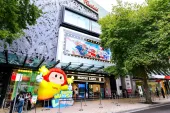

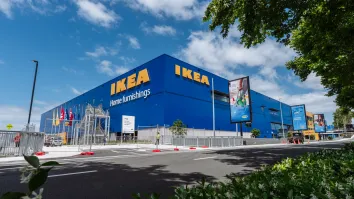
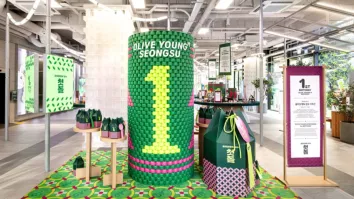















 Advertise
Advertise



